23+ Sample Plumbing Scope of Work
-
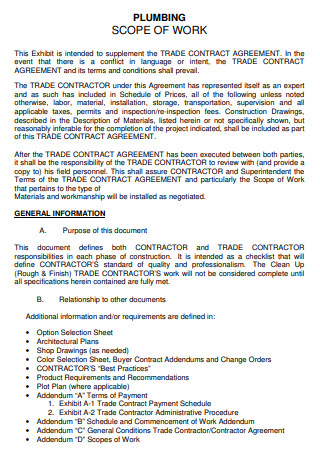
Plumbing Scope of Work Template
download now -
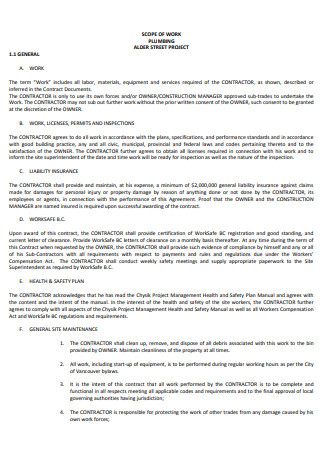
Plumbing Street Project Scope of Work
download now -
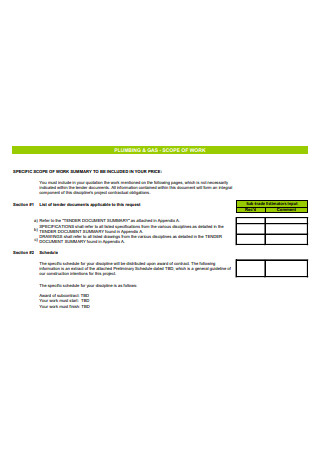
Plumbing and Gas Scope of Work
download now -
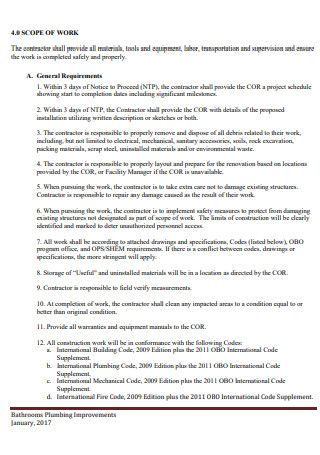
Bathrooms Plumbing Scope of Work
download now -
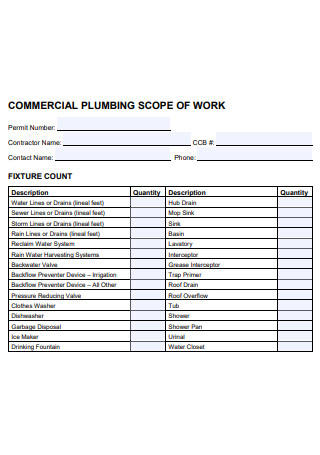
Commercial Plumbing Scope of Work
download now -

Mechanical Plumbing Scope of Work
download now -
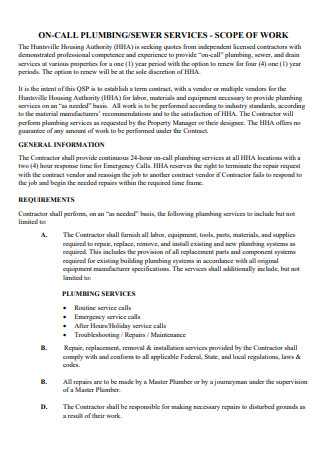
Plumbing Services Scope of Work
download now -
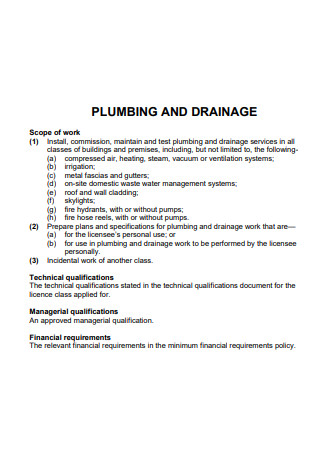
Plumbing and Drainage Scope of Work
download now -
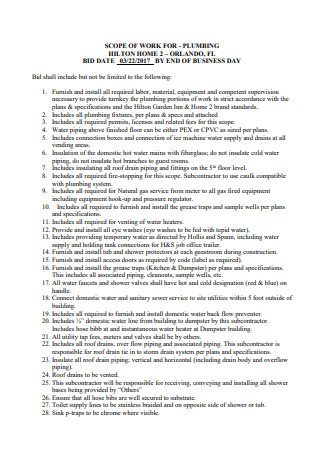
Plumbing Scope of Work in PDF
download now -
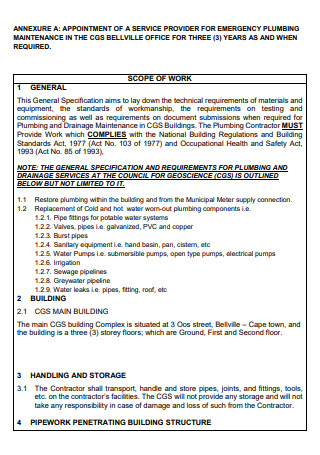
Emergency Plumbing Scope of Work
download now -

Plumbing Construction Scope of Work
download now -
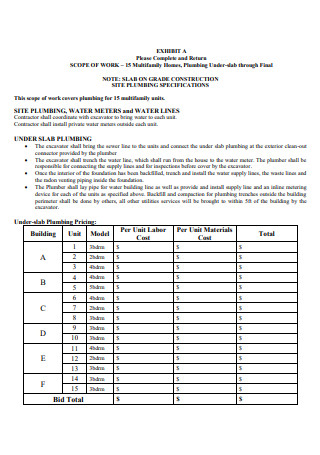
Site Plumbing Scope of Work
download now -
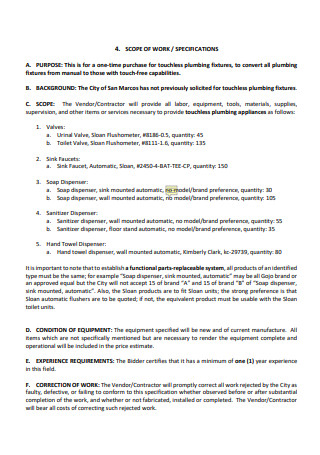
Formal Plumbing Scope of Work
download now -

Plumbing Scope of Work Example
download now -
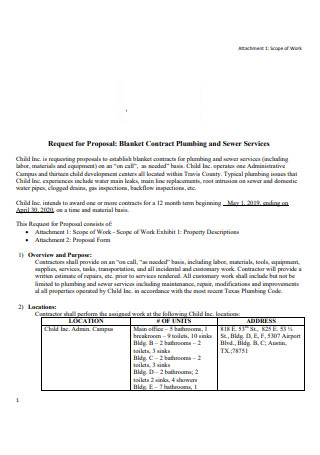
Printable Plumbing Scope of Work
download now -
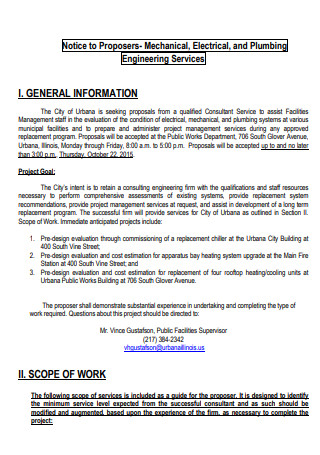
Standard Plumbing Scope of Work
download now -
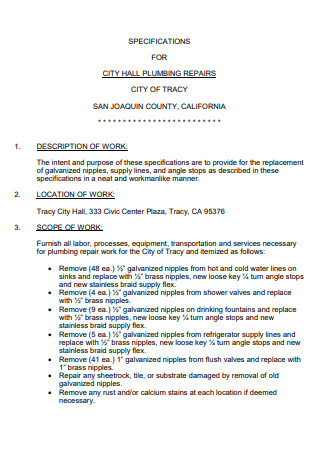
Plumbing Repairs Scope of Work
download now -

Plumbing Permit Scope of Work
download now -
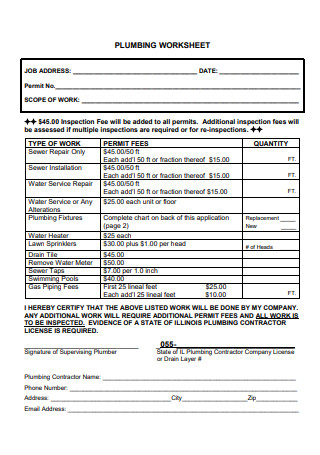
Plumbing Scope of Work Worksheet
download now -
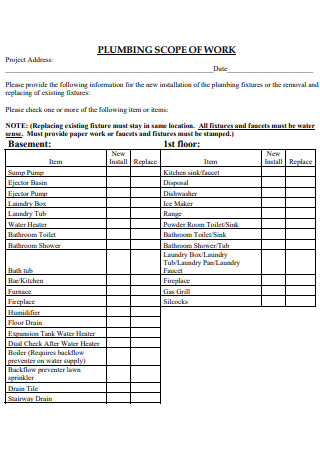
Plumbing Scope of Work Format
download now -
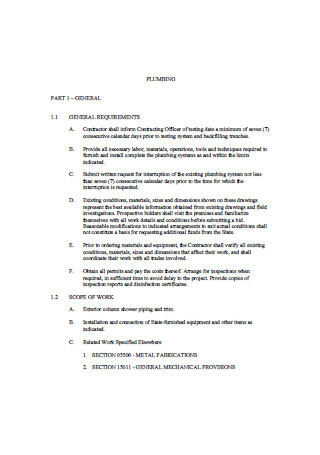
General Plumbing Scope of Work
download now -
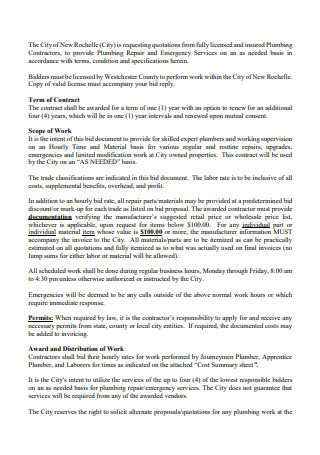
Basic Plumbing Scope of Work
download now -
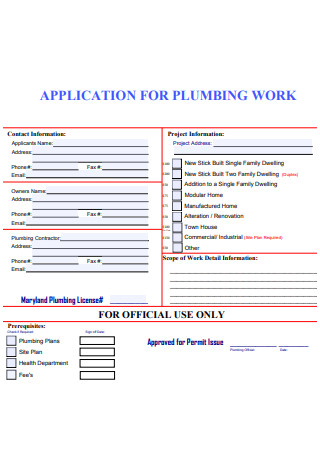
Application For Plumbing Scope of Work
download now -
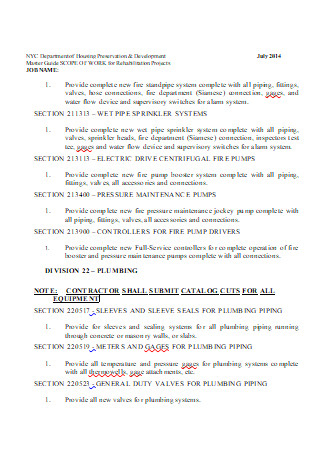
Plumbing Scope of Work in DOC
download now
FREE Plumbing Scope of Work s to Download
23+ Sample Plumbing Scope of Work
What is a Plumbing Scope of Work?
What Does Plumbing Work Generally Involve?
What Are The Types of Equipment Used for Plumbing?
What are Some Hazards That Are Associated With Plumbing?
How to Prepare an Effective Plumbing Scope of Work
FAQs
What is the difference between pipes and tubes?
What are the types of plumbing pipes?
How long should a scope of work be?
What is a Plumbing Scope of Work?
Before we get to the details about the scope of work, let us talk about plumbing first. Plumbing is a collective term that refers to any kind of system that conveys fluids for a wide range of applications. Examples of common applications related to plumbing are waste removal systems and potable water systems. It is called plumbing because back in the early times, lead pipes or plumbum pipes were the first kind of pipes that were effective.
A plumbing scope of work is an important business document that lists what needs to be done by the qualified or licensed plumber in a project. It outlines everything – from the schedules, work details, terms of the scope, and the intended goal of the project which is the most important part. It also discusses the list of equipment or apparatuses that the plumber needs in carrying out the project. In general, this document helps the plumber in carrying out the task efficiently and helps him avoid getting sidetracked to other non-essential tasks.
What Does Plumbing Work Generally Involve?
There are many different kinds of plumbing work and they are usually categorized into different areas. Here are some examples of them:
What Are The Types of Equipment Used for Plumbing?
There are a few specialty tools that a skilled plumber relies on in order to make his/her job significantly easier. Here are some examples of plumbing equipment along with brief explanations:
What are Some Hazards That Are Associated With Plumbing?
There can be a lot of hazards that are present in a plumber’s workspace and if it is not assessed properly, accidents can occur. It is important for a plumber to know what he/she faces on the job. Here are some examples of hazards that a plumber needs to be aware of:
How to Prepare an Effective Plumbing Scope of Work
Here are some steps you can follow in preparing an effective plumbing scope of work:
1. Begin by writing the basic information and overview.
In this step, the basic information of the project to be undertaken by the plumber is written along with its overview. It can be detailed or just a simple scope statement. Included in the project’s basic information are the type of plumbing project to be done, the materials needed, the address of the building where the project is to be done, the appropriate workplace safety measures, and the date of the said project.
2. Write the objectives or goals of the project.
The goals of the project largely depend on what type of project it is as well as its location and duration. Before establishing the goals of the plumbing project, you can begin by writing the reason why the project is needed in that establishment (leaky pipes, new installations, basic maintenance, etc.) and then follow up with its intended goal. It is also important to keep in mind that the goals stated should be easily achievable.
3. Create the scope of the project.
In writing this part, keep in mind the need to write and outline the steps that have to be done in order to accomplish the objectives or goals that are listed in the previous step. This can be done as a bullet list or a simple questionnaire style. Afterwards, you can break down the scope in a separate paragraph into more specific tasks. This can also be written and broken down into phases. This is done to ensure that you or every person (if a plumbing team is involved) is on the same page with the whole process. This is also done to avoid being distracted and getting sidetracked on the project which could lead to delays.
4. Add a timeline of the project.
To ensure that the tasks listed of the project are completed without any possible overlapping of tasks and no complications or delays arise, a proper timeline with deadlines and/or milestones has to be added in the scope of work. If you can, also include milestones in the project to have a source of motivation and something to look forward to throughout the project’s duration.
5. Include a space for a written report.
Written Assessment reports will serve as progress for the task or project, that’s why it is necessary to have spaces allocated for them in the scope of work document. We can learn from the written reports and recommendations if the project is still on time or not and if there are any difficulties or emergencies encountered along with the corresponding actions that were taken.
6. Add an exclusion clause.
Adding an exclusion clause in the scope of work is also important since it details all the tasks, items, and actions that the worker is specifically excluded from doing or handling throughout the duration of the project. Although it is safe to assume that what is not written in the scope is not part of the project, exclusions can still be explicitly written for assurance.
FAQs
What is the difference between pipes and tubes?
The difference between pipes and tubes lies in their size. Tubes can come in a variety of different shapes such as circular, rectangular and cylindrical, while pipes will always come in a round shape. This helps the pipe evenly distribute pressure forces and also makes it efficient when handling pressure from the liquid flowing through it. Another difference is that pipes are used to transport gasses or liquids while tubing is usually used for structural applications.
What are the types of plumbing pipes?
Plumbing pipes can be classified through the following types:
- PEX Pipe – also known as cross-linked polyethylene, PEX pipe is a relatively new pipe in the market. They are usually color-coded and it is only used to supply water. It can withstand water supply pressures and is also flexible enough to weave through walls, ceilings, and basements.
- PVC Pipe – also known as Polyvinyl Chloride, this pipe is used as a drain or vent type of plumbing pipe.
- Rigid Copper Pipe – used in household water supply lines. It is preferred due to the reason that rigid copper pipes do not come with any health risks.
- ABS Pipe – known as acrylonitrile butadiene styrene, this pipe is mainly used as a drain and vent line. It is similar to PVC but softer and only comes in black color.
- Flexible Connection – used as final connections to various appliances, such as sinks and toilets.
How long should a scope of work be?
The length of a scope of work depends on the project that is to be undertaken. When writing a scope of work, it is important to keep in mind all the necessary details of the tasks in the project. However, it is also important that you should not write too much and go overboard with too many unnecessary factors. A very long scope of work will obviously take a lot of time to read and verify, and will inevitably lead to delays in working on the project.
Whenever plumbing comes across someone’s mind, they usually think about their water supply lines and their drainages in the bathroom and sink. They’re not wrong, but plumbing is a more complicated task than that. It also involves varying levels of danger and caution is always advised along with wearing the appropriate personal protective equipment. For this reason, an effective plumbing scope of work document is needed by a plumber or a team of plumbers whenever they get assigned to work on a project. In this article, numerous examples are provided above for you to use as a guide should you need one.
